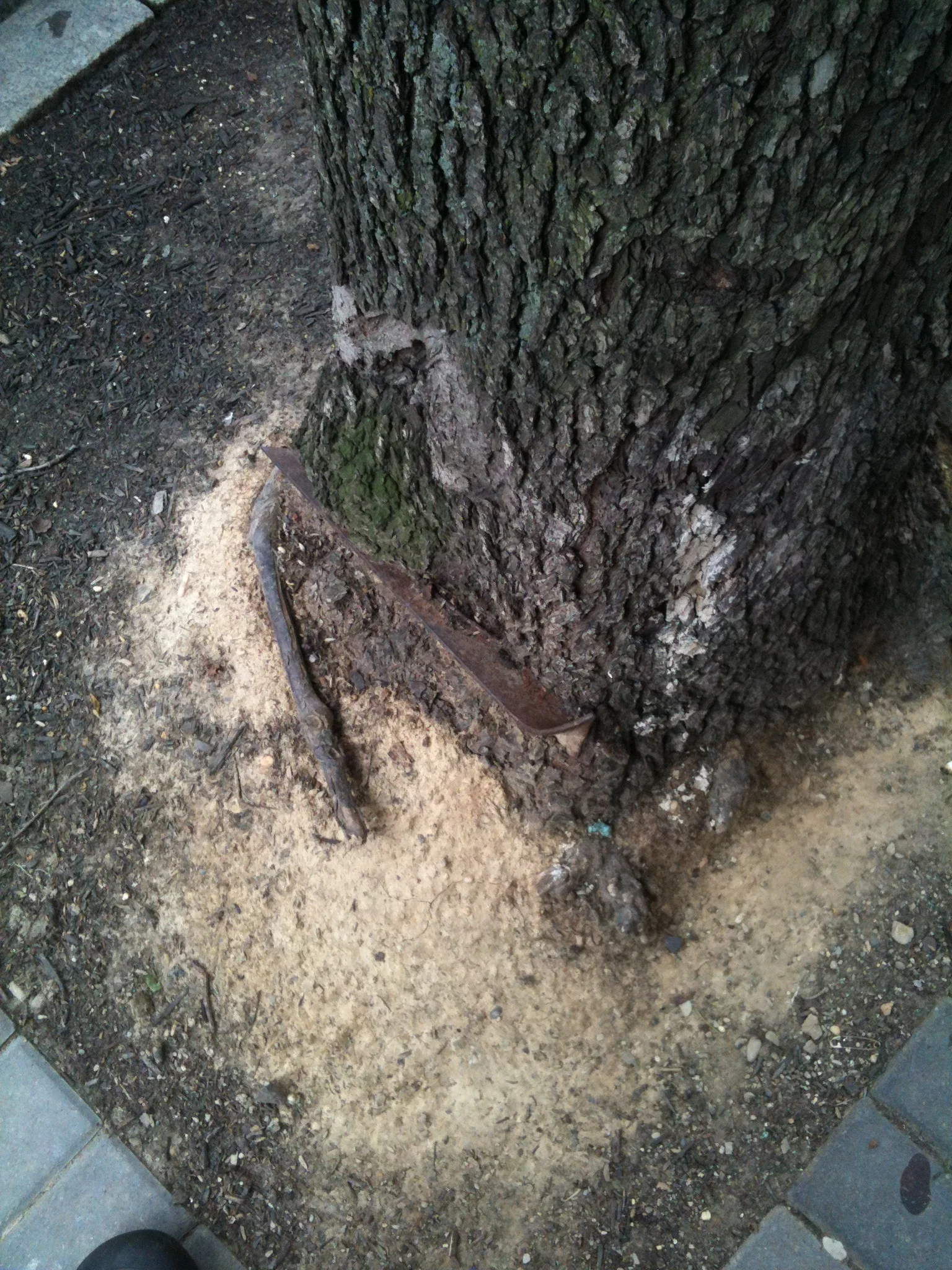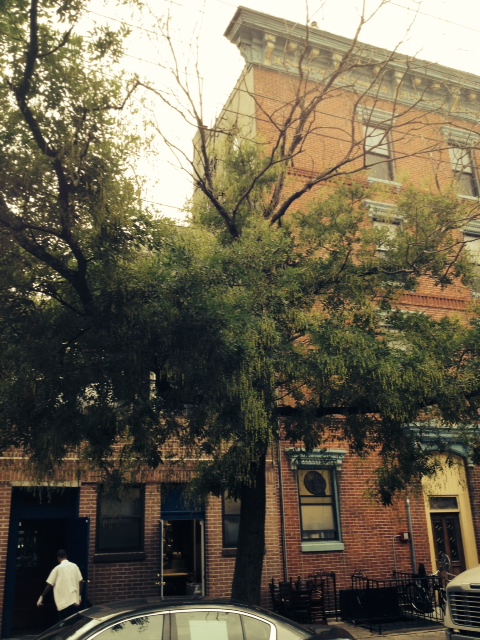Hoboken based Solevis hosts this page in support of the Hoboken Shade Tree Commission. We hope the information and resources presented below will prove helpful to Commissioners and volunteers as they seek to fulfill the Commission's Vision: 4,000 healthy street trees by 2020.
Trees are cool.
Hot? Step under a tree and enjoy the shade.
Keeping cool is just one of many compelling reasons to plant a tree.
Thanks to Tom Chartier and the Hoboken Quality of Life Coalition for providing Hoboken sidewalk infrared heat images.
Tree Planting Success
The Hoboken Shade Tree Commission has planted more than three hundred trees since 2010, a handful of which are pictured below. Continual improvement to our planting program has resulted in lower tree mortality and healthier trees, and aggressive action to correct an irresponsible vendor's non-compliance with planting requirements in 2014.
Residents can apply for a tree here.
This photo gallery below features a sampling of trees planted by the HSTC since 2010...
Right Tree, Right Place
Maybe someday Hoboken's unsightly overhead wires will be rerouted underground. Until then, don't plant large species under wires. Right tree, right place.
Rebuild by Design
The Hoboken Shade Tree Commission is pleased to support the City of Hoboken's Rebuild by Design initiative, a $230 million project designed to mitigate flooding in Hoboken through the implementation of green infrastructure to Resist (costal defense), Delay (slow water flow), Store, and Discharge (pump) storm water. In addition to improving air quality, reducing air temperatures & summer cooling costs, increasing property values, providing a habitat for wildlife - and looking beautiful! - trees and sidewalk tree wells naturally delay and store storm water, and permanently reduce the volume of flood water requiring discharge. A typical medium-sized tree can intercept up to 2,400 gallons of rainfall per year. By adding more and larger tree wells to our otherwise impermeable sidewalks - especially large tree wells planted with understory vegetation - we effectively decrease the amount of stormwater runoff and pollutants that flow into our combined sewer system and the Hudson River estuary. Trees and understory plantings reduce stormwater runoff by slowing down, capturing, and storing rainfall in the canopy, and releasing water into the atmosphere through evapotranspiration. Tree roots, leaf litter, and understory plantings create soil conditions that allow rainwater to infiltrate the soil, keeping it out of our sewers, out of the Hudson, and out of our basements and homes!
Check out this interactive poster that illustrates how trees tame stormwater.
Tree Care Failures
Although the Shade Tree Commission's tree planting efforts are increasingly successful, we've only recently made headway in delivering better tree care and maintenance. The Commission has been hamstrung by Hoboken's policy of delegating maintenance responsibility for trees planted in public rights of way (sidewalks, mostly) to adjacent property owners. According to a leading expert:



















"The urbanized towns that delegate [street tree maintenance to adjacent property owners] have little interest, and certainly no real success, in developing and maintaining a good community forest. All the towns that do it well do it in-house."
This slideshow, featuring a small sampling of trees around town, proves Hoboken is no exception to this rule.
Chapter 136-2 A. (16), Prohibited acts, dead or damaged tree, is the legal justification behind the city's claim that property owners must maintain street trees.
Pruning tips
Pruning is done for a variety of reasons, including to improve tree health by removing crossing, rubbing, crowded, broken, dead or dying branches; to raise canopies over sidewalks and streets; and to improve structure by fostering the growth of a dominant leader (species dependent) & scaffold branches through removal and reduction cuts that eliminate and subordination unwanted growth. When pruning:
- Remove dead, diseased and damaged branches.
- Remove crossing & rubbing branches.
- Raise canopies that are too low to walk under (sidewalk side) or park under (street side), while maintaining a 3:7 - 4:6 trunk to canopy ratio.
- Never remove more than 25% of a tree's live canopy.
- Prevent bark ripping and vascular tissue damage by using sharp tools, supporting smaller branches when cutting, and performing three point cuts on larger branches as illustrated below.
Useful Links
Inspection Forms
- Inspection Form - New Tree Planting Site. Record observations about planting sites being considered for the Street Tree Planting Program. Click here for inspection photos, and here for inspection summary results.
- Inspection Form - Newly Planted Street Tree. Record observations about vendor compliance with planting specifications.
- Inspection Form - Street Tree & Tree Well Condition. Record observations about street trees planted by the HSTC since 2010.
- Sad Pits & Sorry Trees. Record empty pit, undersized pits, girdled tree, and hazardous tree observations.
Applications
- Street Tree Planting Program Application Form. Apply for a street tree.
- Tree Well Enlargement Program Application Form. Apply to have your tree pit enlarged.
- Volunteer Sign-up Form. Help the HSTC by volunteering to help us care for street trees.
Tree Ordinances, Resolutions, and Related
- Community Forestry Management Plans:
- Chapter 62, Shade Tree Commission & Resolution 08-45 establishing the Shade Tree Commission Trust Fund
- Chapter 168, Streets and Sidewalks (especially: Section 14, Care of trees on sidewalks, and Section 15, Planting of trees along streets)
- Chapter 136-2 A. (16), Prohibited acts, dead or damaged tree (used as justification to compel adjacent property owners to maintain street trees)


































